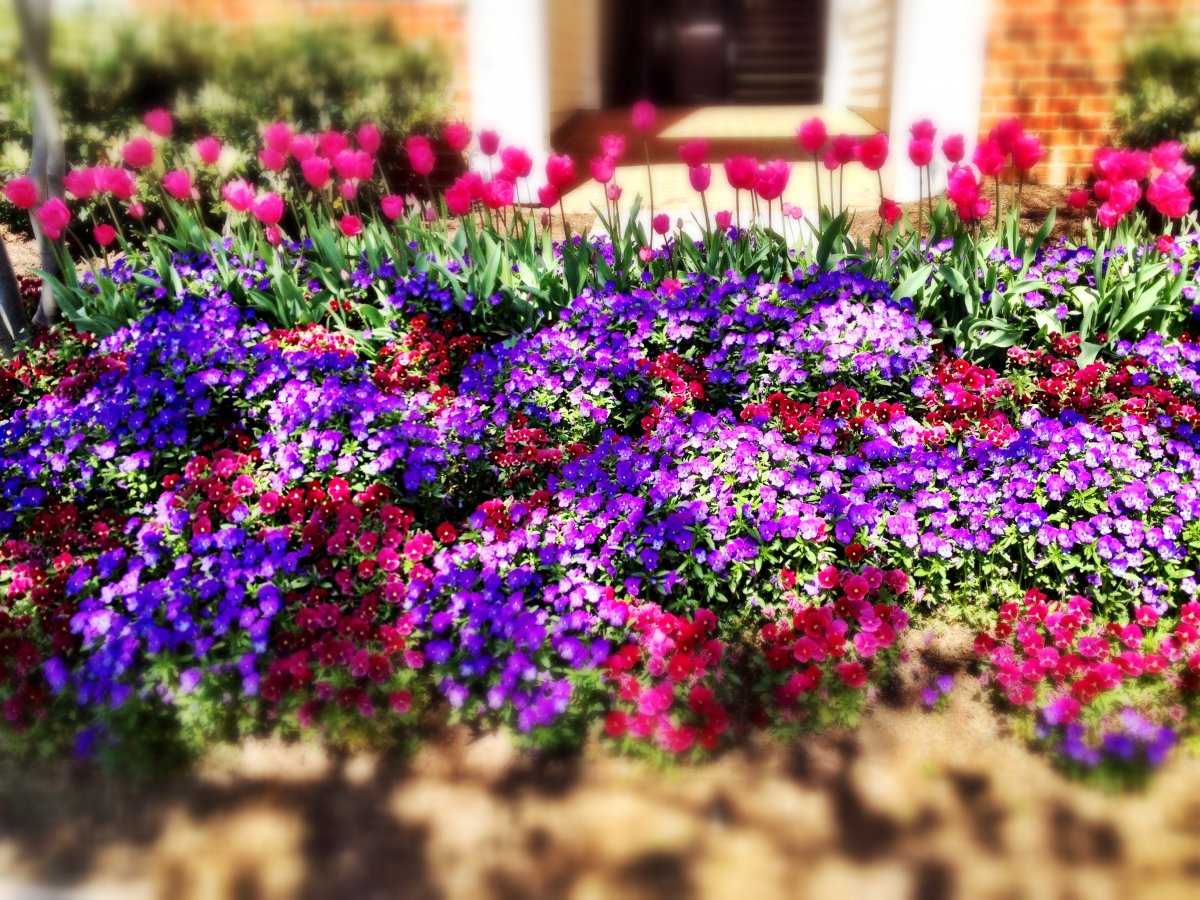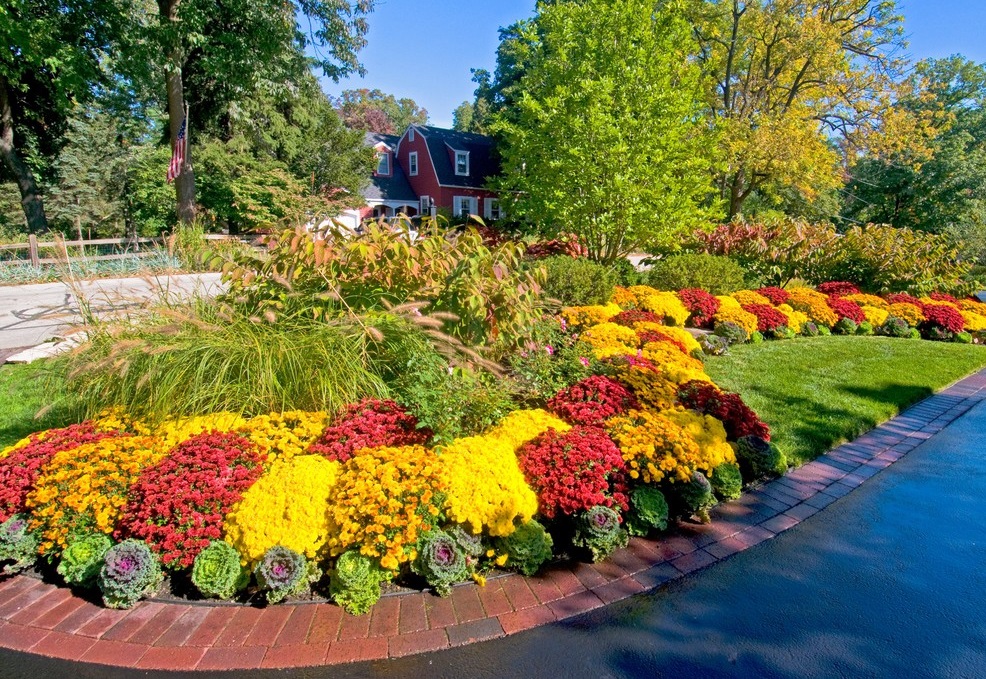The design of multi-tiered spectacular compositions on flower beds will not work without the use of small flowering flowers. Low-growing plants are universal in landscaping any flower bed, as they can be soloists on carpet flower beds, be a border-edging or background design of a mixborder for taller flowering plants.
The choice of low-growing flowers, no more than 35 cm in height, is simply huge: to design beautiful compositions, you can choose both biennials and annuals, and perennial small plants. We propose to consider the most popular varieties of flowering flowers and their photos, which will be the best addition to low flower beds.
Content
Low-growing varieties
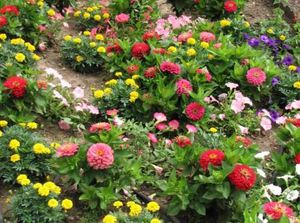 Annual low-growing flowers are a great opportunity to fill your backyard with colorful and bright colors. A distinctive feature of annuals is that with the help of these plants you can arrange every year new picturesque flower bedsthat will bloom for the whole summer.
Annual low-growing flowers are a great opportunity to fill your backyard with colorful and bright colors. A distinctive feature of annuals is that with the help of these plants you can arrange every year new picturesque flower bedsthat will bloom for the whole summer.
So, annually, by planting annual plants, you can update the appearance of the backyard in the country or make a unique masterpiece of flowers in a private house and cheer yourself up for a long time. In addition, almost all annual plants are quite unpretentious in maintenance and do not need special attention.
Almost all perennials bloom throughout the summer, but they bloom later than others. Therefore, so that your flower garden is not empty, you need to know that annuals are divided into three flowering groups:
- Plants that bloom until the end of autumn, the main representatives are snapdragons, calendula, asters.
- Flowers that bloom at the end of May: marigolds, marigolds, cornflowers.
- Plants that bloom in spring, the main representatives are petunia and begonia.
Most popular annual flowers
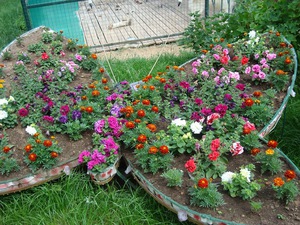 Ageratum. This plant creates flowering low-growing carpets, which will certainly be a bright decoration of an alpine slide. This flower prefers sunny places in rockeries and flower beds.
Ageratum. This plant creates flowering low-growing carpets, which will certainly be a bright decoration of an alpine slide. This flower prefers sunny places in rockeries and flower beds.
Iberis. Iberis is a rather unpretentious plant, with umbrella-shaped buds. It gets along well with other plants and creates unique compositions on the flower garden.
Undersized lobelia... This is a plant that blooms beautifully all summer, being a great decoration for small flower beds. Lobelia can be planted in light shade or in open, sunny areas.
Petunia flowers... The plant is represented by abundantly flowering balls, ampelous type, which is perfect for planting in pots on loggias and balconies or on a flower bed.
Petunia blooms with the arrival of the summer season and blooms before the beginning of winter, it can be planted both in partial shade and in the sun. Thanks to its obvious flowering characteristics and attractive appearance, the annual petunia will be an indispensable flower for any gardener.
Undersized and unpretentious marigolds with spectacular and beautiful inflorescences, blooming at the end of May. These flowers are represented by small, compact shrubs that will delight the eye until late autumn.You can plant marigolds in a little shade, but they are also not afraid of direct sunlight.
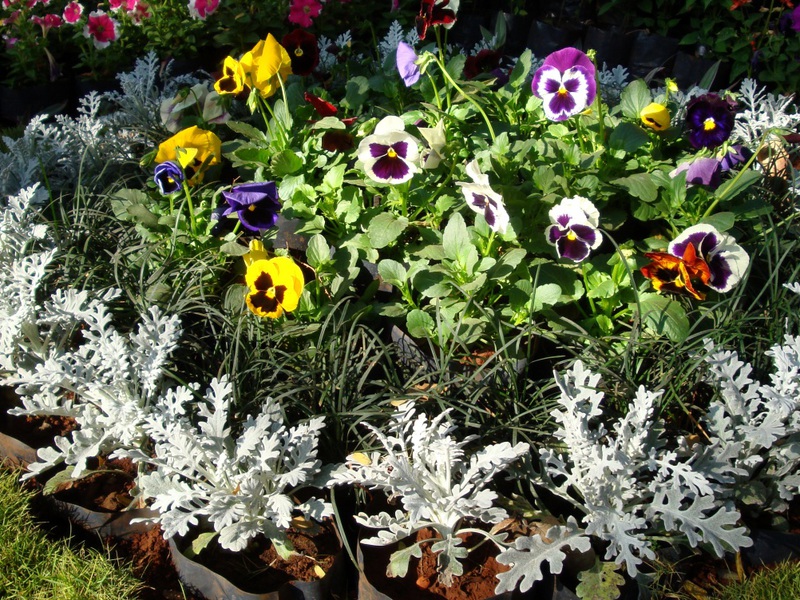

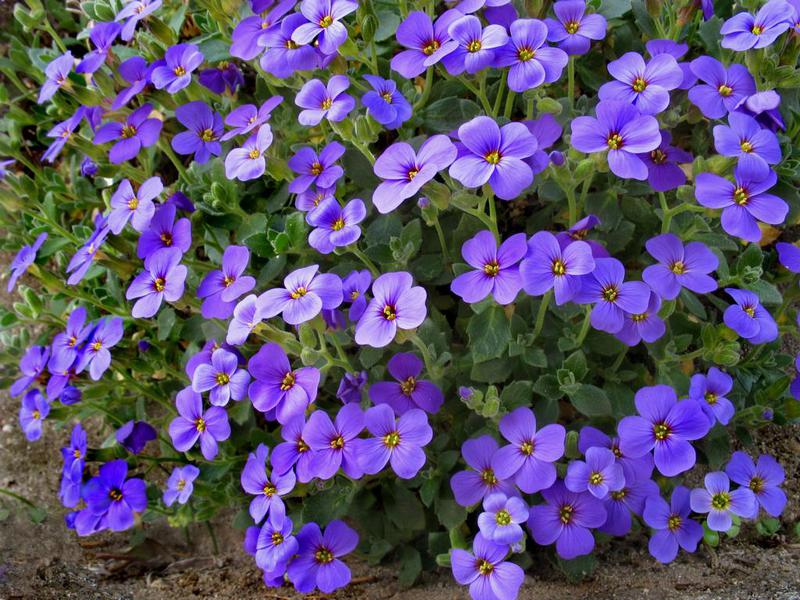
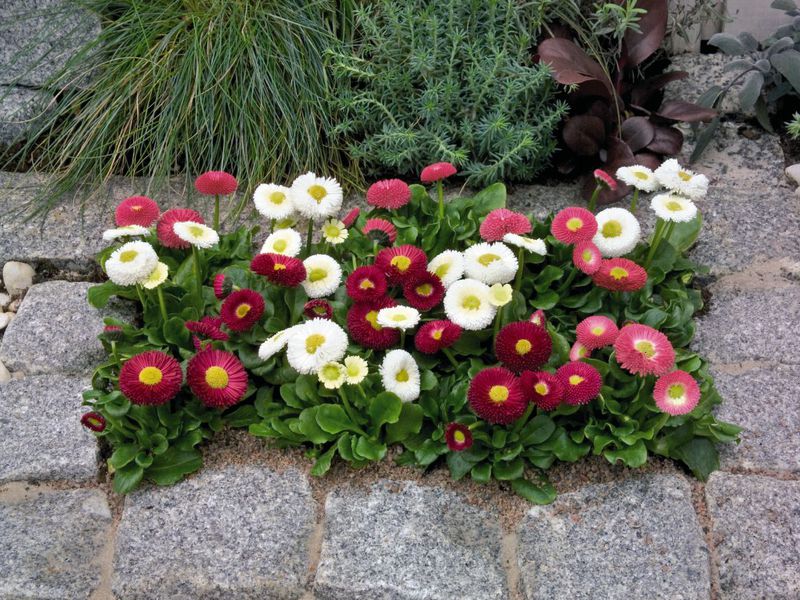
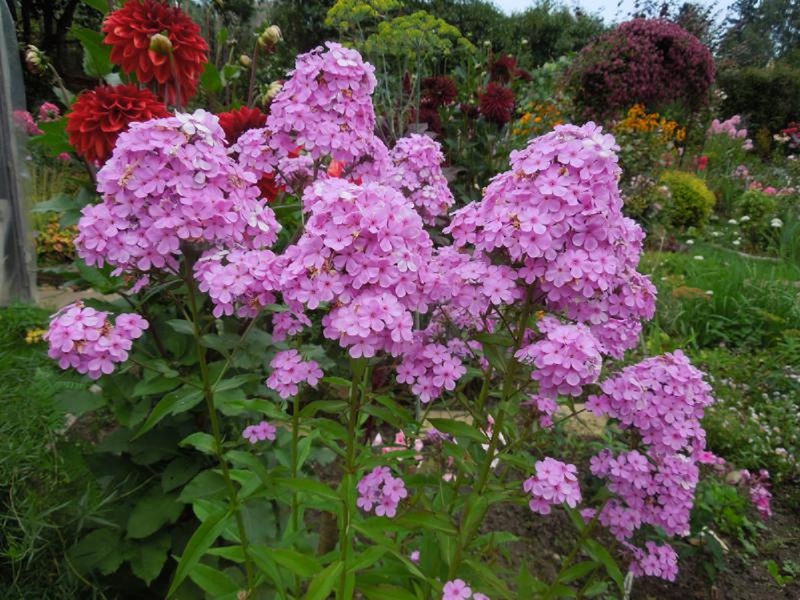
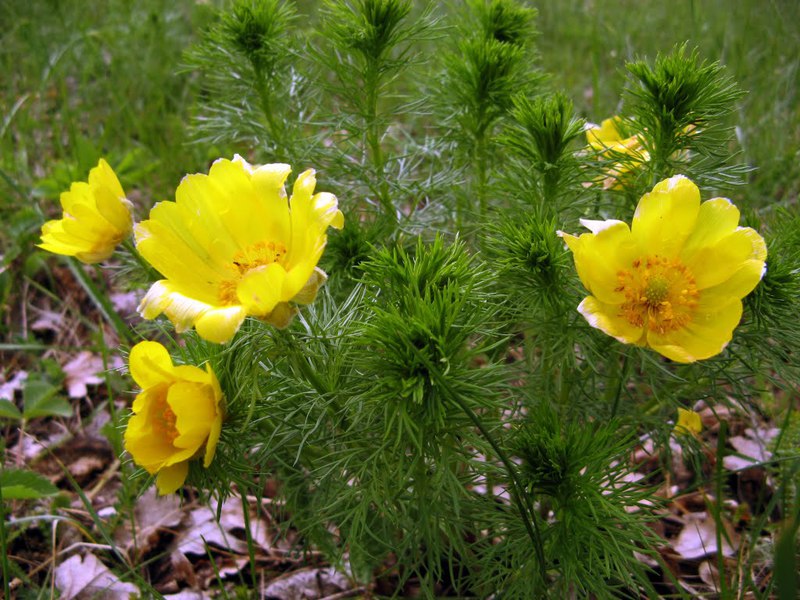
Despite the great popularity of annual flowers, some gardeners still give their preference to plants with longer flowering, such as biennials.
The main feature of these flowers is the ability to grow plants during two years in one place and frost resistance, which makes it possible not to dig out the plants before the winter season.
However, it is recommended to cover biennial flowers for the winter at very low temperatures so that they do not freeze out and can again please with their inflorescences in autumn and summer.
In addition, gardening a flower garden with biennials is much more profitable in cost, since you can not worry about purchasing new seeds or seedlings for two years.
Pansies... This is an unpretentious and beautiful undersized crop that loves sunny places in flower beds, but can grow quite well in partial shade. The only condition for the normal development of this plant is abundant and constant watering.
Carnation plant, which grows no more than 25 cm, and therefore, as a rule, is used as a frame for alpine slides or rockeries. Carnation blooms profusely for at least 4 months, with proper watering and care.
Forget-me-not forest... This is a delicate culture with bluish and beautiful buds that blossom and bloom from late spring to early September.
Adonis. A magnificent spring flower that can delight you until the very arrival of autumn. Adonis usually grows no more than 20 cm in size and adorns the flower bed with yellow and light flowers.
Undersized biennial daisy, which blooms in early June and lasts until the end of July, with proper care.
Humid air is best for these flowers, as well as abundant and constant watering. It is advisable to grow flowers in partial shade, protecting the inflorescences from the scorching direct sunlight.
Night violet or hesperis... A very beautiful and delicate flower that blooms with the arrival of the night.
In addition to decorating a flower bed, near a gazebo or a house, hesperis will give a pleasant, sweetish, delicate smell with which the inflorescences fill the entire district. Violet prefers moist soil and shaded areas, and before winter, it is advisable to cover this flower.
There are also many stunted and beautiful biennial plants that will certainly decorate any flower bed or alpine slide near the house, for example, astilbe, saxifrage, rejuvenated or gravilat.
Perennial plants of a stunted type grow rather quickly, therefore their best combine with annual varietiesfilling the flowerbed with flowers of various shades.
Perennial undersized flowers
 Perennial flowers are considered the most popular plants that are grown in flower beds, these flowers are quite unpretentious to care for, and eliminate the need to think about planting seedlings or seeds every year.
Perennial flowers are considered the most popular plants that are grown in flower beds, these flowers are quite unpretentious to care for, and eliminate the need to think about planting seedlings or seeds every year.
Perennial low-growing flowers will provide an opportunity for a very long time create a beautiful composition. Among the unpretentious and bright representatives of perennial flowers, the following can be distinguished.
Sea alyssum... This plant, due to its appearance, is also called a stove. Sea alyssum grows, as a rule, no more than 12-26 cm, with dense and large inflorescences of yellow, pink or white. The plant tolerates frosts, but with temperatures down to minus 11 degrees, and the next year it immediately begins to grow.
Oak sage... Salvia, or sage, is a perennial that will look great on any site and delight its owners the whole summer and almost until the end of autumn.
Salvia buds represented by lilac or purple candles.This plant needs almost no maintenance and can perfectly take root in a shaded area of a flower bed.
Low-growing perennial phlox plants, which blooms for at least six months. It grows in bushes with spherical buds, the most common representatives are:
- stallion-bearing white;
- phlox chanel;
- subulate phlox.
Chamomile flowers... It is a prominent representative of perennial plants and a classic flower. Not everyone knows that chamomile also has names - pyrethrum or matrix. Chamomile begins to bloom from the beginning of June to the beginning of September, and, possibly, even longer if you trim the stems that have already fallen off in time.
Crimson Arenaria... A low-growing perennial flower with buds, like a "carnation", deep crimson color. A gerbil or arenaria can grow no more than 14 cm and begins to bloom in July until early October.
This flower grows best on sandy soil and is perfect for small alpine slides and low flower beds, buds are pale pink or white.
Features of the choice of flower beds for low-growing flowers
 Despite the fact that most plants are quite undemanding to care for, it is necessary to observe soil selection rulesto offer crops optimal conditions for development and prolong flowering time.
Despite the fact that most plants are quite undemanding to care for, it is necessary to observe soil selection rulesto offer crops optimal conditions for development and prolong flowering time.
These rules are quite simple and do not require any special skills or knowledge. The bushes of plants must be separated when planting. Thus, so that they are best visible in the flowerbed, but do not clutter up other plants, the best solution is 6-7 inflorescences.
Gardening experts recommend growing next to each other, only those plants that the same conditions will do for development, the same ground, preference for lighting.
- So that biennial and perennial plants do not grow throughout the entire area of the flower bed and do not "clog" the rest of the plants, during planting, you need to make some fences, separation of stones or other materials.
- It is advisable to choose a place right away, without changing it in the future, and without replanting the bushes during flowering.
- In order for the flower not to release a large number of inflorescences and outgrow the required height, it is necessary to feed it wisely. A very large amount of nitrogen baits provokes significant growth of leaves and stems.
- It is necessary to plant in shady areas only those flowers that feel uncomfortable in the sun. Light-loving plants, with a lack of sunlight, will begin to give few inflorescences, and stretch in height.
- Low-growing plants for flower beds must be grown in conditions of the necessary humidity. All the time it is necessary to take into account the need for watering for each taken, specific variety.
- For the effect of constant flowering of the flower bed, make a planting schedule. Bulbous plants should preferably be planted in October, while varieties such as nasturtiums, mignonette, and marigolds are best planted in spring.
For good development of flowers, the flowerbed must be weeded from weeds and from time to time loosened the soil, as well as do the processing of plants pest drugs.
In order for the flowerbed to have a neat, attractive and well-groomed appearance, faded buds and diseased plants must be removed.
Combination options for plants in a flower bed
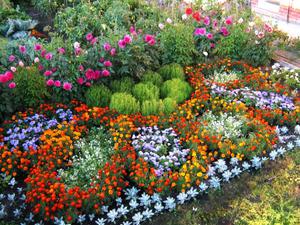 The beauty of a flower bed will greatly depend on the correct choice of colors, planted flowers. Knowing and planning in advance the colors of the flowering and the exact time when the buds begin to bloom, you can bring to life any color from a combination of blue, red, pink and white colors. gardener's grandiose fantasies.
The beauty of a flower bed will greatly depend on the correct choice of colors, planted flowers. Knowing and planning in advance the colors of the flowering and the exact time when the buds begin to bloom, you can bring to life any color from a combination of blue, red, pink and white colors. gardener's grandiose fantasies.
It is advisable to plant a composition of low-growing plants so that the flowers are located at a short distance and do not clutter each other. For example, a combination of cornflowers and marigolds will look great.
For decorating buildings and walls, a night violet or mattiola, as well as decorative polka dots and chrysanthemums, are great. For growing plants in pots that are displayed in flower beds, you can choose a petunia, or a composition of several types of juveniles and stoves.
When decorating a flower bed with low-growing flowers, you can combine different varieties of annual and perennial plants on it, planting crops with different or the same flowering duration. The main thing is to show imagination and try to make your flower bed original and beautiful.

